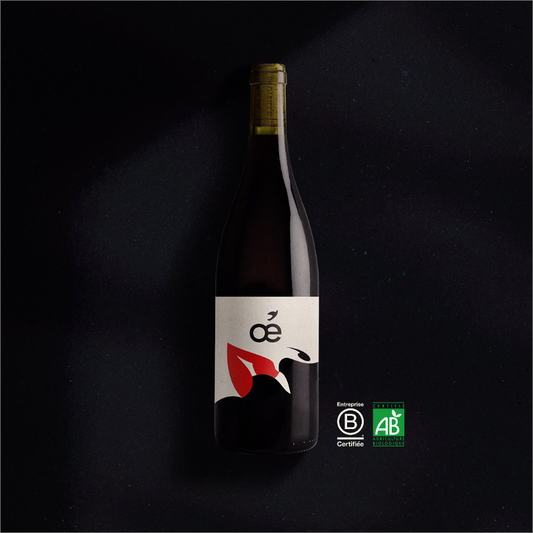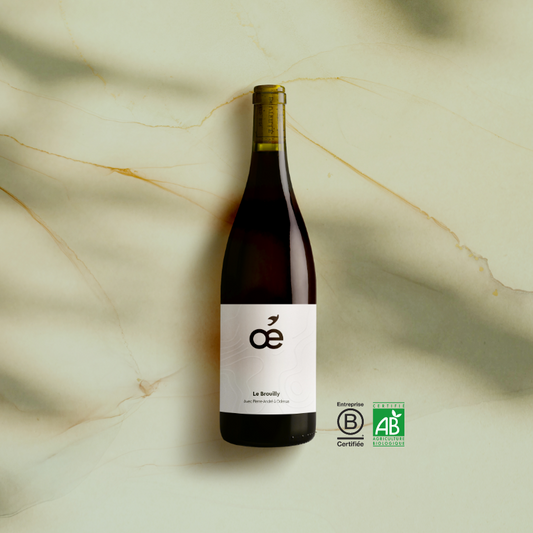Ah... Sulphites ! Both misunderstood and often targeted, one thing is certain, they are talked about. We said with the team that we had to talk to you a little about it so that you know this subject to perfection. Here we go !
What are sulphites?
Sulphites , kesako ? You may have come to this article out of simple curiosity without having any idea what sulfites are . So let's do a little overview to put you in context.
Sulphites, surnames, first names, nicknames
Valentin Yvon Emmanuel Robin, here is a very long first name (I assure you, there are also my middle names). And it's not over, some call me Val, others Valou, Valoche or even Valent'. Yes, sometimes you have to follow! Well sulfites also have the right to a string of names, first names and nicknames. Here is a non-exhaustive and already well-filled list: sulphite, sulphur, sulfur dioxide, SO2, sulfur dioxide, sulphates, disulphite or sulfur dioxide .
Reading all these names gave you a headache? Stick with us, we'll talk about the effects of sulfur on our health a little later. Now that the introductions are done and you know how to properly name them, let's take a look at what lies behind sulfites .

Sulphites a natural product
Some fear them, others ignore them, in any case, no one can avoid them because grapes produce them naturally. Wait, you mean all wine has to contain sulfites? Affirmative, but with different sulphite levels depending on the wine. We will see all that a little later.
In fact, sulfur is a chemical element (for the most curious, I let you discover the whole description here ), a trace element (it is therefore natural), which forms naturally during fermentation , an essential step in winemaking . _ When the yeasts act, transforming the must into wine, sulfur compounds are also formed. This is why it is found naturally in wine, even if it is in very small quantities.
Sulfites, for the preservation of wine
As you know, nature does things well so if sulfur is present naturally, it is good for something. Yes, sulfites have many capacities, and among them, we can mention their most well-known properties: antiseptic and antioxidant .
The sworn enemy of time is obviously oxidation , a chemical process caused by oxygen which degrades the exposed element. Well the sulfur, dedicated as it is, takes care of consuming the oxygen molecules, thus protecting the surrounding elements from unwanted oxidation . In this case, it is therefore the wine that is protected, and that is not displeasing to us.

The limits of sulphites
In addition to rhyming, this title is aptly named because sulphites do not only have advantages, it would be too good otherwise. Sulfites have always been used in oenology for their different capacities (blocking fermentation, fighting against alterations, etc.), but it was not until the beginning of the 20th century that we began to see more clearly their impact on microorganisms.
Of course, sulphites are attractive and we would like to put them everywhere. A bit during the harvest to transport the grapes in complete serenity, a bolinette (do you have the reference?) in the vats to stabilize the wine and a spoon (it's not said but it's cute) in the bottles to preserve them Longer.
On paper it's a seller, but in reality you have to be wary. If the natural formation of sulphites does not pose a problem either for the wine or for us, when we start adding them everywhere, we turn to disaster.
Sulphites, do not fall into the trap
Winegrowers can add sulfites almost at each stage of winemaking :
Yes, but now, by adding sulfur everywhere, the latter risks taking up too much of an unwanted place in the wine. When it is too present, sulfur is an aroma inhibitor , it gives headaches and it can even cause respiratory problems for people with asthma or allergies .
Wanting to keep your wine is good, but keeping its aromas and its health is even better. This is why the labels have imposed maximum levels of authorized sulphites .
Sulphite levels according to the wines
Do you know the 4 main categories of wine? Conventional wines , organic wines , biodynamic wines and natural wines .
To know everything about the difference between these wines, it happens here
From viticulture to bottling, these wines are different, you feel it in the glass and you see it on the paper.
Each of these families of wines is controlled by specifications (specific to each) on which stipulates the maximum sulphite levels for each cuvée according to the wines. You will find just below a summary table of the maximum doses of sulphites authorized for each of our wines according to its category.

You will notice that at Oé the sulphite levels of our wines are closer to the sulphite levels in biodynamics than to the sulphite levels imposed by the organic labels because our organic Oé winegrowers are very concerned about your after-evenings.
The wines containing the least sulfites are the natural wines called SAINS (Without Inputs Nor Any Added Sulfites). In these wines, the winemaker does not add any additives or inputs , this wine only contains sulphites that form naturally during fermentation . There are therefore no wines without sulphites strictly speaking. Moreover, since 2005, it is mandatory to display the mention “ contains sulphites ” as soon as the wine contains more than 10 mg/l . A piece of information to highlight in all good dinners!
Thanks to this article, natural wine will have no more secrets for you
Sulfur for the vines so as not to look gray
Sulphur, with a name like that, you think it can't do plants any good, do you agree? And yet, in organic and reasoned viticulture, we like it a lot!
Oh good ? Why ? Well, because sulfur is a natural element and it is a very good ally in the fight against diseases such as powdery mildew, the sworn enemy of vines. Instead of using chemical phytosanitary products and pesticides that destroy everything in their path, we favor natural solutions. Sulfur is therefore found in many preparations that are very popular in organic farming, such as the famous Bordeaux mixture . Sweet food lovers, even if the Bordeaux region is full of culinary specialties to die for, Bordeaux mixture is a fertilizer reserved for plants and not a delicious feast.
To console you, we suggest you taste our good white Bordeaux which you can accompany with a nice plate of seafood and a zest of lemon. Yum !
Let's get back to our sheep, finally to our sulphites. Sulfur can be used in different forms and the best known are dusting and wetting . The names are self-explanatory, with the first technique, the sulfur is dispersed in the form of powder on the vines which are mixed in particular with talc or calcium carbonate to make the solution less flammable . Yes, less flammable because this solution is mainly used in hot weather , and it is the sulfur vapors that will effectively protect the vines. The other technique, wetting , is used more in cold, wet weather . The little extra of this technique is that it can be combined with a treatment against mildew . A two in one, in small quantities, it's always good to take!
Become an expert on Burgundy terroirs by reading this article
With these beautiful words, let's all toast together to the knowledge of the role of sulphites with our good bottles of organic Oé wines ! So, are you more into red wine , white wine or rosé wine ?





